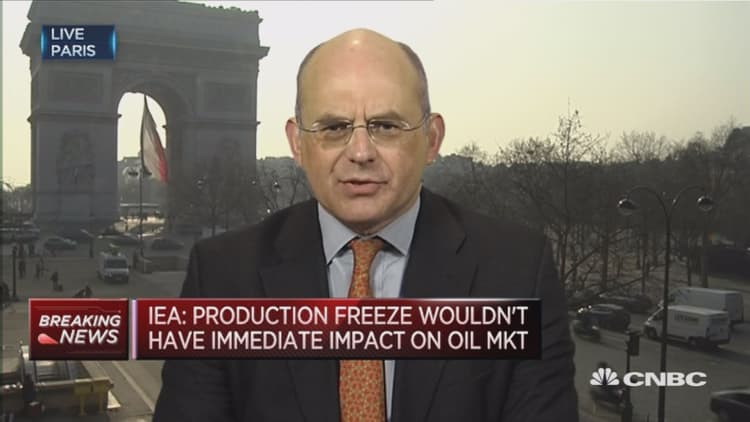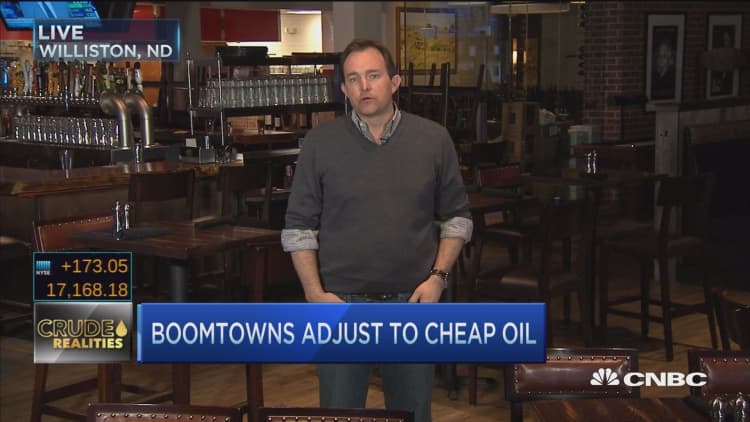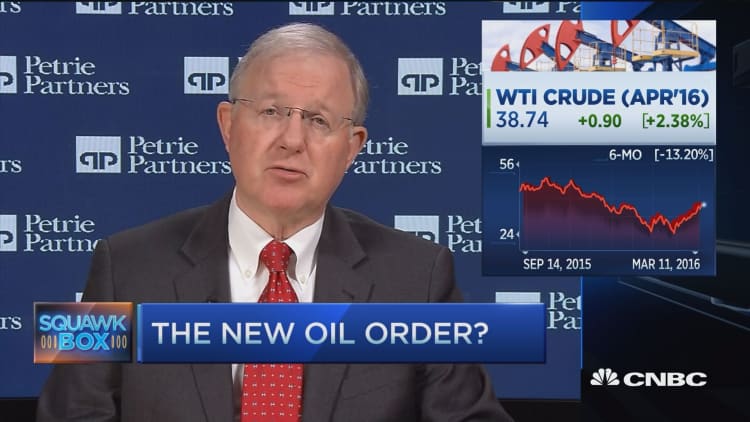


U.S. oil rose on Friday after the Western world's energy watchdog said crude prices may have reached their bottom, although Goldman Sachs said the market's rally was "premature."
Also on Friday, oilfield services firm Baker Hughes reported the number of rigs drilling for oil in the United States fell by 6 to a total of 386. At this time last year, the oil rig count stood at 866.
The International Energy Agency, which coordinates energy policies of industrialized nations, said U.S. and non-OPEC crude output was beginning to fall quickly and increases in Iranian supply had been less than dramatic.
The IEA said it believed non-OPEC output will fall by 750,000 barrels per day this year, some 25 percent more than the 600,000 bpd it previously forecast.
Goldman Sachs remained bearish, saying in a note to clients that prices could fall sharply in coming weeks with record U.S. inventory builds offsetting production declines in the country.
The bank said oil prices need to be low enough to ensure supply is reduced over time, projecting $39 a barrel on the average for global benchmark Brent crude in 2016, down from its previous forecast of $45.
"So now it appears the two sides of the debate are set," said David Thompson of Washington-based commodities broker Powerhouse. "The bearish view of Goldman Sachs versus the IEA on the bullish side."
U.S. crude futures settled at $38.50 a barrel, up 66 cents, or 1.74 percent, after hitting a 2016 high at $39.02. For the week, it gained 7..18 percent, rising for a fourth week in a row.
Brent crude futures were at $40.41 a barrel, up 36 cents. On the week, it rose more than 4 percent, headed for a third straight weekly gain.
The IEA's forecast aside, there could be more supply disruptions, with a source telling Reuters that maintenance works will close Britain's Buzzard oilfield in July for roughly a month. The 180,000 bpd field is the largest contributor to the Forties crude oil stream, one of four crudes which underpin Brent.
However, oil has resumed flowing from Iraq's Kurdistan region to the Turkish port of Ceyhan, sources said, after a pipeline's closure in mid-February removed some 600,000 bpd from the market.
The IEA said it saw global oil and product stocks rising heavily in the first half of 2016, in the range of 1.5 million to 1.9 million bpd, but that would slow to 0.2 million bpd in the second half. The excess itself led some to warn that a premature price recovery could hamper market rebalancing.
"There are clear signs that market forces ... are working their magic and higher-cost producers are cutting output," the Paris-based organization said.




